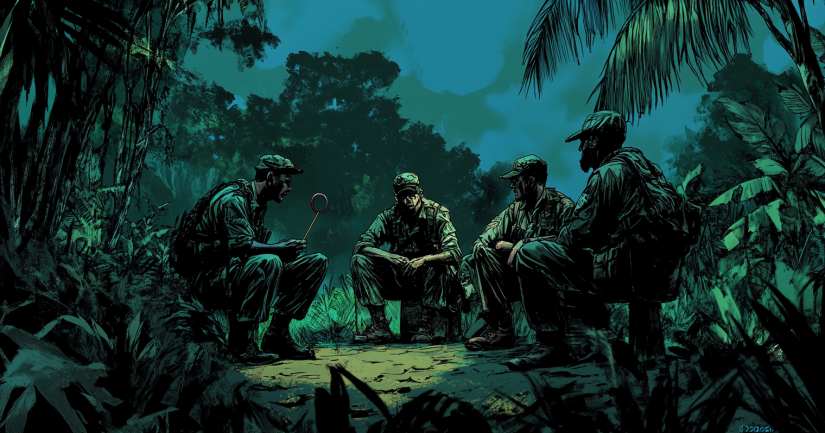
Test your understanding of the unfolding narratives in The Things They Carried Chapter 3 Quiz, where every page reveals a new layer of truth. This chapter invites you to explore the emotional landscapes the soldiers navigate, each burdened with more than just physical gear. As you delve into the quiz, you’ll uncover how Tim O’Brien masterfully balances the tangible with the intangible, illustrating the weight of fear, love, and memory.
Each question will guide you through the intricate tapestry of the soldiers’ lives, revealing the layers of narrative that O’Brien weaves. You’ll gain insights into how the characters cope with their circumstances, the relationships they forge, and the resilience they muster. This is more than a simple recall of facts; it’s a journey through the human heart amidst the chaos of war.
Keep up the momentum! Test your knowledge of The Things They Carried Chapter 4 Quiz, revisit the pivotal moments of The Things They Carried Chapter 2 Quiz, or go for the big picture with The Things They Carried Full Book Quiz. There’s always more to uncover!
Prepare to engage with the text on a deeper level. Discover themes of courage and vulnerability, and see how these elements shape the narrative. Challenge your understanding and expand your appreciation of this compelling chapter. Dive in and let the story carry you. The Things They Carried Quizzes: Explore Tim O’Brien’s Vietnam War stories …
What Happened – The Things They Carried Chapter 3
In Chapter 3 of The Things They Carried, soldiers in the Vietnam War carry various items. These items are both physical and emotional. The chapter lists the things each soldier carries. Some carry weapons and gear. Others carry personal items like photographs. Each soldier’s load is different.
The chapter also describes the weight of these items. It explains how the weight affects the soldiers. Some items are heavy, while others are light. The soldiers carry memories and fears. They think about their families and homes. They also worry about the dangers of the war. The chapter mentions specific soldiers. It talks about Lieutenant Jimmy Cross.
He carries letters from a girl named Martha. He often thinks about her. Another soldier, Henry Dobbins, carries extra food. Dave Jensen carries hygiene items. Ted Lavender carries tranquilizers and marijuana. Kiowa carries a Bible and a hatchet. The chapter also describes how the soldiers cope with stress. They tell jokes and stories to pass the time. They try to distract themselves from the war.
The chapter ends by emphasizing the emotional burdens. These are the fears and memories they carry in their minds. The soldiers march through the land, carrying these burdens with them.
The Things They Carried Chapter 3 – Quotes
- “The things they carried were largely determined by necessity.” – Narrator, ‘Describes the soldiers’ burdens during the Vietnam War.’
“They carried all the emotional baggage of men who might die.” – Narrator, ‘Highlights the soldiers’ psychological and emotional struggles.’
“Courage, I seemed to think, comes to us in finite quantities, like an inheritance.” – Narrator, ‘Reflects on the nature of bravery and its limitations.’
“They carried their own lives.” – Narrator, ‘Emphasizes the personal cost and risk involved in war.’
“They carried each other, the wounded and the weak.” – Narrator, ‘Shows the camaraderie and support among soldiers.’
“A true war story is never moral.” – Narrator, ‘Indicates the complex and often amoral nature of war narratives.’
“It’s time to be blunt.” – Jimmy Cross, ‘Expresses the need for honesty and directness in confronting harsh realities.’
“Grief, terror, love, longing—these were intangibles.” – Narrator, ‘Describes the emotional experiences that weigh heavily on the soldiers.’
“They carried their own lives and the lives of the dead.” – Narrator, ‘Illustrates the heavy responsibility and memory of fallen comrades.’
